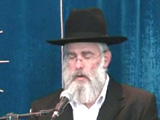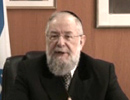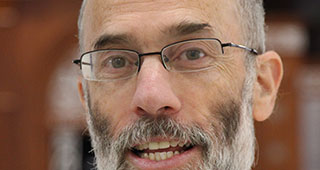Beit Midrash
- Sections
- Chemdat Yamim
- Parashat Hashavua
- Torah Portion and Tanach
- Bamidbar
- Korach
The house full of sefarim is referring to great G-d-fearing Torah scholars, for whom Torah is everywhere they turn and do not go anywhere without being in its proximity. These "holy houses," because of their great connection to Torah, may not feel the value that a little parchment could have, when in truth its great contribution comes from its position at the entrance and exit of the house. These guard Israel at the time they are involved in important affairs. This is a metaphor for the little hints of Torah values, which are found everywhere: in a religious school, in a religious agricultural settlement, in a kibbutz, in classes for youth, in a place where responsible sports are being played without desecrating Shabbat. Each one may be a small thing, but just like a physical mezuza, their location gives them surprisingly great value.
There is also an opposite mistake. People think that a "garment of techelet" can do fine without tzitzit. This can refer to the productiveness and pleasures of life. One is tempted to think that it is enough to infuse simple things with significant content. Indeed, the Chatam Sofer (Sukka 36a) said that working the land in Eretz Yisrael is equal to putting on tefillin because the mundane that is connected to sanctity can be holy itself. Is it so, then, that if the whole garment is techelet, you do not need extra tzitzit (i.e., specifically religious activities)? And if you attach tzitzit, you certainly should not require techelet in the tzitzit! The excitement with the content of the garment (i.e., the totality of life in Israel) takes away from the excitement with specific religious acts.
This too is a mistake. For example, even if the whole nation is holy, Aharon is the "holy of holies" (see Divrei Hayamim I, 23:13). If work in Israel is holy, then activities that would be holy outside Eretz Yisrael are holy of holies in Eretz Yisrael. If plowing is like wearing tefillin, then putting on tefillin is certainly like putting on tefillin! The relative difference between the mundane and holy activities remains the same, just that everything is elevated in Israel. If one does not sense this, then he is like a person who approaches the Temple and desecrates its sanctity (see Bamidbar 17:28).

Parashat Hashavua: How to Ensure a Future of Torah
Rabbi Yossef Carmel | Cheshvan 5786

The Right Pace to Leave a Holy Place
Parashat Beha'alotcha
Rabbi Yossef Carmel | 16 Sivan 5764

Parashat Hashavua: “See” and “Be Seen”
Rabbi Yossef Carmel | Cheshvan 5786






















